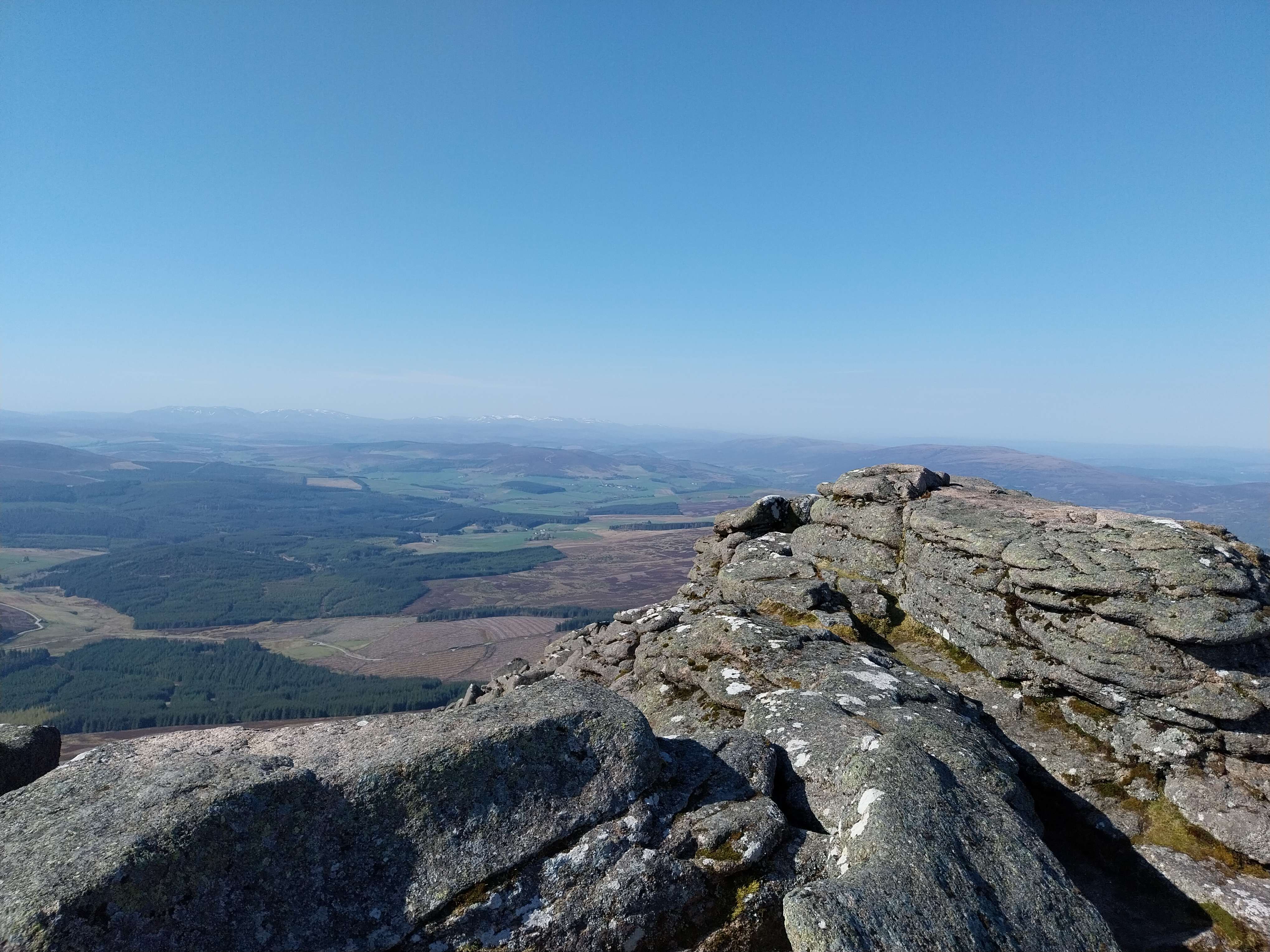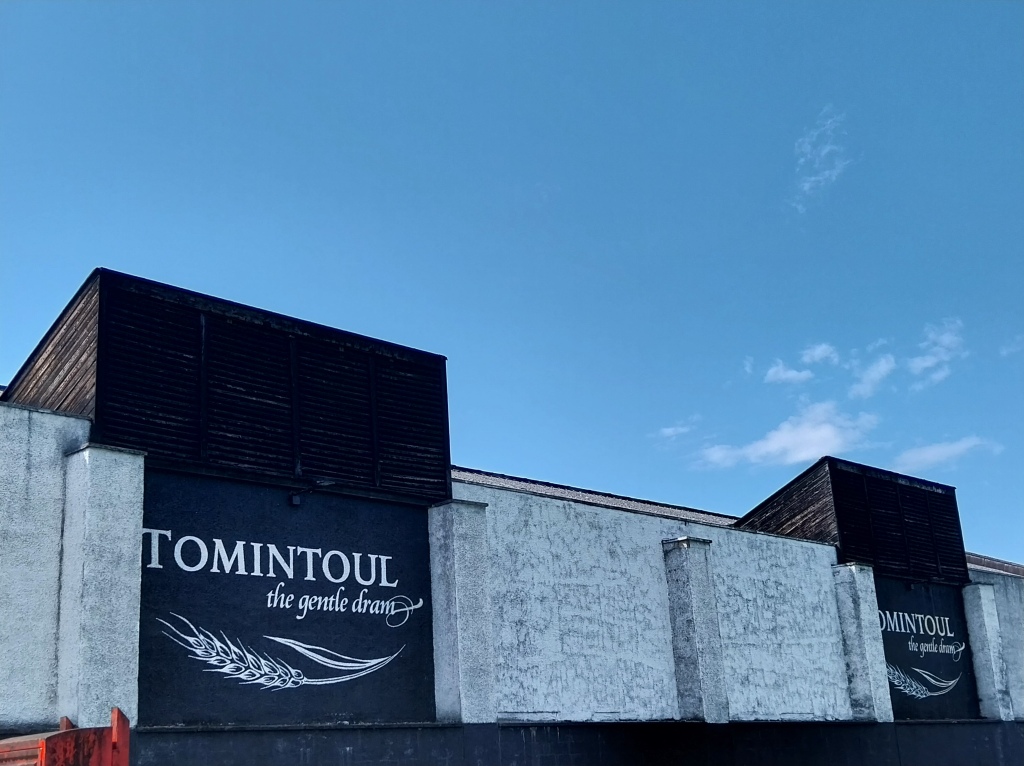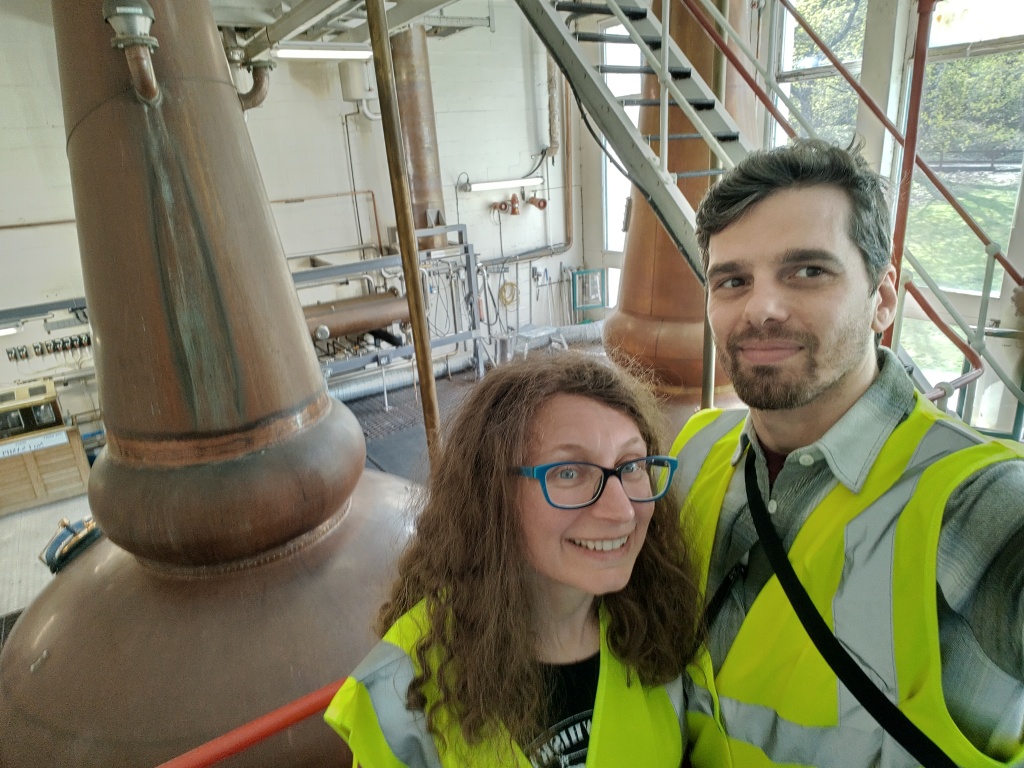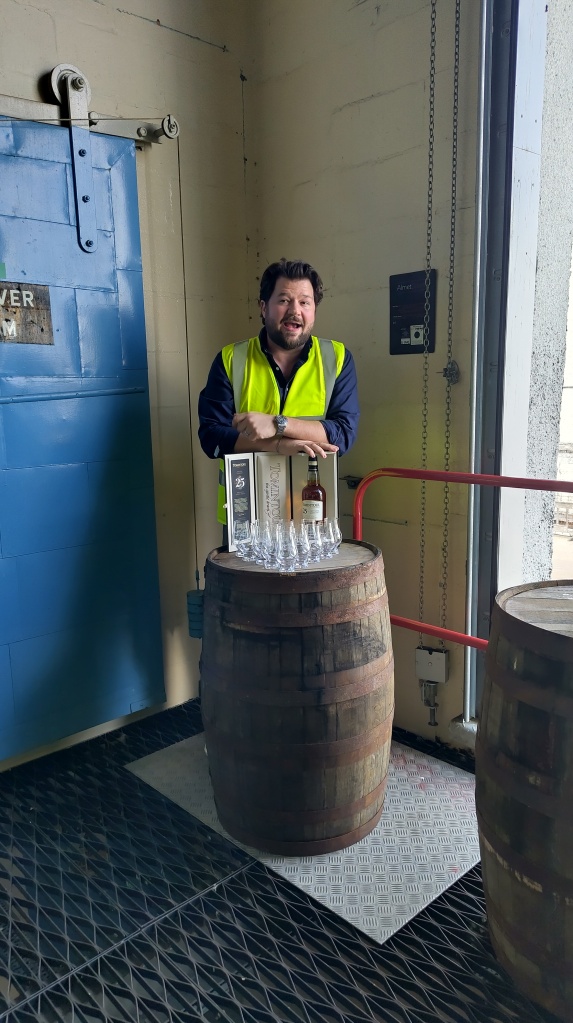
From Ben Rinnes to Tomintoul
TL; DR: Another sunny day in Speyside, so we finally did what we’d wanted to do for a long time: climb Ben Rinnes! In the afternoon we visited Tomintoul, attending a Spirit of Speyside tour and (quite generous) tasting. We were not very familiar with this malt, which turned out to be a very solid and sweet Speysider!
We woke up well rested, under the trees and with birds chirping all around us. We had breakfast in our van: coffee, yogurt, fruits, and we indulged in a couple of cookies as well. Again, it was a magnificent sunny day, so we could go ahead with our plan: go for a walk before starting our whisky activities.
We’d decided to climb Ben Rinnes, the hill in the middle of Speyside, whose slopes provide water to many distilleries around it. It was not a long walk, less than 8km, but it was quite steep, a 550-metre ascent in total from the parking lot to the top of the hill. We started early, around 8.30am, when not many others were hiking (we only met about 4-5 people while going up). The climb started quite uphill right away, and the ascent was interrupted by a couple of short plateaus, before the last climb of more than 300 metres.

Finally a good day to climb Ben Rinnes.
Once on top, though, we got rewarded, as the view is quite amazing. As were going up, on our left, we spotted a distillery very close to the top – we guessed Benrinnes but we were wrong, it was Allt a’Bhainne. Others could be seen (well, mostly the vapours) once on the top. Our plans to have a snack at the top were ruined by the strong wind, so we quickly started descending back to the parking lot. We bumped into a lot of people, probably because of the time, although the sky was clouded when we got to the van. On the Walk Highlands website the hike (back and forth) was estimated around 3-4 hours, but it took us only 2, so we had some spare time!

Quite windy up there!
Back in the van, we started looking for a place for coffee and a bite, possibly in the direction of our next destination, Tomintoul. We were unlucky at first: some cafes were still closed until summer, some were opening later in the day. We were saved by Bike Glenlivet, a cafè inside an outdoor centre, less than 10 minutes past the distillery. There we could enjoy a sandwich and, past midday, a warm soup.
We arrived at Tomintoul distillery a few minutes early, just the time to park, take some photos and check in. The distillery is tucked at the bottom of a woody hill, along the road, with another hill in front of it: we were told later that during the heather flowering season it becomes all purple, which is why purple is one of the flag colours.

About to explore the distillery producing a ‘gentle dram’.
The visitor centre actually consists in a room with the shop and a big table for tastings. Fun fact: in the room there is also a giant bottle (over 100 litres!) of Tomintoul 14: the Guinness World Record holder for biggest whisky bottle, in our understanding. The distillery is usually open to public, but their regular tours are on Mondays, Tuesdays and Thursdays, making it a bit hard to schedule a visit. This was one of the reasons to visit them during the Spirit of Speyside, the other being that we were not very familiar with their whisky, so an enhanced event could have made us know them better…and it did, indeed!

The tour was hosted by Rob, the distillery manager, and Iain, the master blender who gave us a dram of their 16yr (40%abv), one of their flagship expressions. We always appreciate the tours where they give you a dram at the beginning, well done! The distillery was founded in 1964, so it is “young” compared to their peers, and they produce unpeated (marketed as Tomintoul), lightly peated (peated Tomintoul) and heavily peated (Old Ballantruan) single malt. The latter takes name from the spring where they source water. The peated run lasts about 6 weeks per year, much less compared to the 40 weeks of the unpeated one. They use Crisp malt, which is stored in 8 malt bins before processing through a dresser and the classic Porteus mill. The grist is then moved 12.2 tons at a time to the mashtun, with 48,000 litres of water at 65°C, followed by the usual two other waters at increasing temperature, to maximise the sugar intake.

The mash-tun is mashing. Smashing.
Once the wort (clear after the first water, cloudier after the second) is cooled down to 20°C, it is moved to one of the 6 washbacks, where they add solid distillers’ yeast. Fermentation lasts about 60 hours, then the wash is distilled in one of the two wash stills, and then again in one of the spirit stills. Cut points are usually from 72% to 61.8%, and it takes more or less two hours. Originally the distillery had only two stills, the second pair was added in 1974. Rob showed us one of the byproducts of the first distillation, a syrup with almost 0% alcohol, which is sold to farmers.


…And the classic selfie.
Still in the still room (pun sort of intended), Iain joined us again, this time to give us a dram of the 25yr (43%), a very sweet and delicious one! We then visited one of the warehouses, a racked one (the most common from the distilleries built in that era). They can store up to 150,000 casks on site, while the rest is shipped to the main site in the Lowlands. There, Iain demonstrated us the use of a (leaky!) copper dog, although the whisky inside it came from a bottle, not straight from a cask: a single cask from a Bordeaux wine barrique, vintage 2008 (14yr), bottled at 60.7%.

We headed back to the visitor centre for the remainder of the tasting: first, a couple of Madeira matured expressions, a 15yr limited release (46%) and a single hogshead from 1998, bottled in 2022 at 24 years of age (50.2%). The next dram was their Cigar Malt, a quite delicious sherry cask matured expression, lightly peated, and very solid despite the 43% strength (a shame it was a bit pricey). We finished with an Old Ballantruan from the core range: the 15yr (the other two are the non-age statement and the 10yr, all bottled at 50%): a sweet and smoky dram. At that point, a group of Spanish who were on the tour (one of them was a London-based employee of Angus-Dundee, the distillery owners) brought out some Jamon Iberico, which paired perfectly with the last two drams!

A wide range of flavours here!
We left the distillery very happy (not just because of the drams, Gianluigi was dry!), taking one of their bottle with us: as most of their core range is bottled at 40% or 43% and the limited expressions were a bit pricey, the perfect one for was the 14yr: not only unchill-filtered and bottled at 46%, but also from ex-bourbon casks, which in our opinion is the best type of cask to grasp the distillery character.
We arrived at our destination, the Parkmore Cottage and Camping in Dufftown, where our friend Justine (from Kask Whisky) was waiting for us. We had a beer, dinner and a few drams with her, to conclude the day on a high. And what a great day was that, first the climb to Ben Rinnes, and then Tomintoul. With 7 drams their tour was one of the most generous as well (compared to higher priced tours with less than half of the drams…), giving us a chance to fully appreciate the potential of their very solid and fruity (gentle, as they like saying) whisky.
Stay tuned to know about our day at another Speyside whisky distillery…until then, slainte!
Tomintoul Distillery: Behind the Scenes Tour and Tasting
Price: £70.00 pp (Spirit of Speyside 2024)
Duration: 2hrs (actually, almost 3!)
Tasting: Tomintoul 16yr (40%), Tomintoul 25yr (43%), single cask from a Bordeaux wine barrique (2008, 14yr, 60.7%), Madeira 15yr limited release (46%), Madeira single hogshead (1998, 24 yr, 50.2%), Cigar Malt (43%), 15yr Old Ballantruan (50%)
Target: whisky geeks
Value for money: very good!
Highlights: the tasting (including drams during the tour)
Recommended: yes
Link: https://tours.tomintoulwhisky.com/